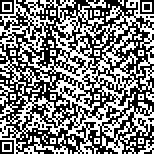| 摘要: |
| 为了研究不同光照强度、温度对黑鲷(Acantho pagrusschlegelii) (♀)×真鲷(Pagrosomus major) (♂)杂交F1代受精卵孵化效果及仔鱼存活的影响, 作者采用试验生态学的方法比较不同温度(16、18、20、22、24、26℃)下杂交鲷受精卵的孵化率、畸形率、孵化时间、7日龄仔鱼的存活率; 比较不同光照强度下(10、100、300、800、1500、4 000、10 000 lx)受精卵孵化率、畸形率、孵化时间; 比较不同光照强度下(200、1 000、2 000、5 000、10 000、15 000、20 000 lx)7日龄仔鱼的存活率。结果表明: 在盐度为22条件下, 受精卵最高孵化率(34.00%)和最低畸形率(16.65%)的孵化温度为20℃; 在16~26℃范围内, 温度与孵化时间呈负相关, 与7日龄仔鱼存活率也呈负相关。不同的光照强度对受精卵孵化率和孵化时间的影响不显著, 孵化率为65.88%~71.88%; 但大于800 lx的光照会令畸形率上升(大于15.21%); 另外, 5 000~10 000 lx的光照强度更适宜仔鱼生存, 7日龄仔鱼存活率达到38%~40.75%。黑鲷(♀)×真鲷(♂)杂交子代最佳孵化温度为20℃, 最适光照强度为5 000~10 000 lx。 |
| 关键词: 杂交鲷(Acantho pagrusschlegelii) (♀)×(Pagrosomus major) (♂) 受精卵 光照 温度 |
| DOI:10.11759/hykx20171214003 |
| 分类号: |
| 基金项目:江苏省农业科技自主创新资金项目(CX(17)2021); 江苏省重点研发计划(现代农业)项目(BE2016326); 江苏省水产三新工程项目(Y2016-23); 江苏省农业重大新品种创制项目(PZCZ201744) |
|
| Effect of illumination and temperature on zygote hatching and larval survival of hybrids obtained from Acanthopagrus schlegelii (♀)×Pagrosomus major (♂) |
|
LIU Hai-lin,ZHANG Zhi-yong,ZHANG Zhi-wei,XU Jin,CHEN Shu-yin,JIA Chao-feng,ZHU Fei,MENG Qian
|
| Abstract: |
| This study investigated the effect of illumination and temperature on zygote hatching and larval survival of hybrids obtained from Acanthopagrus schlegelii (♀)×Pagrosomus major (♂), which could help in improving the hatching rates and survival ratio. The hatching rates, the deformity rates, and the hatching period of zygotes and the 7-day larval survival rates of hybrid seabreams were observed and compared at the temperatures of 16, 18, 20, 22, 24, and 26℃. The hatching rates, the deformity rates, and the hatching period of zygotes were compared at the illumination intensities of 10, 100, 300, 800, 1500, 4 000, and 10 000 lx. The survival rates of 7-day larvae were compared at the illumination intensities of 200, 1 000, 2 000, 5 000, 10 000, 15 000, and 20 000 lx. The results showed that the zygotes had the highest hatching rate (34.00%) and the lowest deformity rate (16.65%) at the temperature of 20℃. At a temperature range of 16–26℃, it was observed that the temperature negatively correlated with the hatching period and the survival rate of 7-day larvae. There was no significant effect of different illumination intensities on the hatching rate and the hatching period, and the hatching rates were 65.88%–71.88%. An illumination intensity of >800 lx resulted in a higher deformity rate (>15.21%). In addition, the illumination intensity of 5 000–10 000 lx was found to be more suitable for larval survival, with the survival rate being 38%–40.75%. Conclusion: The most suitable hatching temperature for the hybrids obtained from A. schlegelii (♀)×P. major (♂) was 20°C, and the most suitable illumination intensity was 5 000–10 000 Lx. |
| Key words: hybrid seabream zygote illumination temperature |
